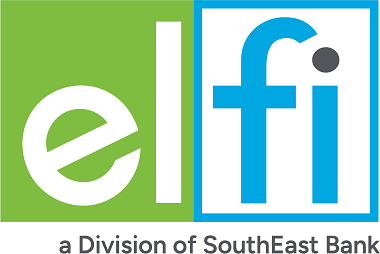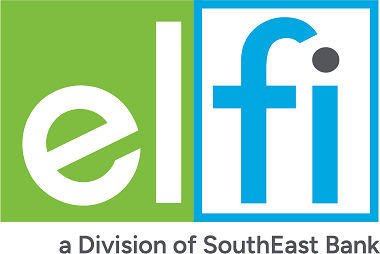Opting for a community college offers many benefits, particularly for saving money. Tuition costs are generally much lower than those at a four-year university, and other expenses tend to be more manageable as well. It’s an economical way to begin your education.
However, despite the affordability of community colleges, you may still require assistance covering expenses such as tuition and books, which could involve borrowing money. Various avenues exist to aid in funding your education, including private student loans, which we will delve into further here.
Community College As a Way Save Money
Save on educational costs by leveraging community colleges. You can complete your bachelor's degree affordably by starting at a community college, earning credits or an associate degree, and transferring them to a four-year university. This strategy significantly reduces the overall cost of your education. Some community colleges even have partnerships with universities to facilitate seamless transfers, ensuring a smooth credit transfer process.
Additionally, consider high school dual enrollment as a cost-effective option. By enrolling in both high school and community college courses simultaneously, you can earn credits from both institutions. This approach not only provides valuable college exposure but also offers specialized high school courses tailored for future transfers to universities like career or technical education classes. Dual enrollment accelerates your academic pursuits and efficiently prepares you for success in pursuing higher education.
FAFSA® and Federal Financial Aid
The first thing you should do, even if you are going to community college, is to fill out the Free Application for Federal Student Aid (FAFSA). The FAFSA is the primary application for federal financial aid and can also be used to apply for grants, scholarships and student loans offered by state and college programs. The FAFSA will allow you to apply for need-based grants like the Federal Pell Grant, which could significantly reduce your tuition expenses. Make sure you review your college and state’s FAFSA deadline, because some aid may be awarded on a first-come, first-served basis.
Even if you don't qualify for need-based aid, some colleges offer merit-based scholarships that require no repayment. Your school may require you to submit the FAFSA in order to award you merit-based scholarships—so it's important to complete the FAFSA regardless of whether or not you attend a four-year university or a community college.
The FAFSA will open the door to federal financial aid which is available to those attending a community college in several forms. Students may be eligible for grants, such as the Federal Pell Grant or Federal Supplemental Educational Opportunity Grant (FSEOG), which provide funds that do not need to be repaid. Loans, such as the Federal Direct Loan Program, also provide funding but must be repaid with interest. Work-study programs allow students to work part-time on-campus or off-campus at an approved job and earn money that can be applied towards educational expenses.
State and local government agencies, as well as some private organizations, offer scholarships based on academic achievement or financial need that can help cover tuition costs at community colleges. Finally, veteran's benefits may also include educational assistance for veterans or their dependents attending a community college.
Federal Student Loans
There are two types of federal student loans available to students attending community college: Direct Subsidized Loans and Direct Unsubsidized Loans.
Direct Subsidized Loans are based on financial need. The interest is covered by the government while you are enrolled in school at least half time, during periods of deferment, and when the loan is in its grace period.
Direct Unsubsidized Loans are not based on financial need, and you are responsible to repay all the interest which begins to accrue (add up) upon disbursement. If you are able, it’s best to pay this interest while you are enrolled to keep your loan costs down.
There are several repayment options available for federal student loans. Generally, borrowers can choose between a standard 10-year repayment plan or one of several income-driven repayment plans. Special programs such as Public Service Loan Forgiveness (PSLF) and Teacher Loan Forgiveness (TLF) are also available to certain borrowers who meet the requirements.
Borrowing Private Student Loans
Private student loans are funded by private lenders while federal loans are those backed by the U.S. Department of Education. Private student loans, offer both variable and fixed interest rate loan options while federal student loans have a single fixed interest rate set annually by Congress.
Private lenders may also offer special discounts and perks to their student borrowers—such as reduced interest rates with enrollment into a qualified auto-pay program, or deferred payments while meeting the enrollment terms—which makes it worth considering if you're looking for an affordable way to finance your education.
Pursuing a 4-Year Degree after Community College
If your plan is to transfer to a 4-year school after community college, there are several key factors to consider.
Ensure Your Credits Will Transfer
It’s important to have a conversation with the college where you want to transfer to, i.e., the college where you expect to graduate from. Ask them about their credit transfer policy, transfer admissions acceptance rate, and if they have any existing transfer agreements with any community colleges in the area. If a transfer agreement exists, it will be easier to transfer credits from your community college to your four-year college. Often times you will see public state colleges have agreements with state community colleges. But it’s always best to do this research before you start your higher education journey to avoid any issues down the line.
Consider the Costs and Potential Limitations
It is also important to look at the cost of tuition at each school before making your decision. Community colleges often have lower tuition rates than universities, meaning you may end up saving money by attending a two-year school before transferring to a more expensive four-year institution. Upon transfer, you may notice financial aid opportunities specifically for transfer students—especially your first term after the transfer.
Even if you are granted additional funding from the new school, it may not cover the full cost of attendance which means that you may need to supplement with other sources of funding such as private loans, working while in school, or asking for financial assistance from family.
Research other options such as grants and scholarships that could help reduce your overall costs so that there is less burden placed on loan repayment after graduation. If you do need to borrow a student loan for your educational expenses, make sure that you are realistic about what your future earnings potential. Not only do you have to repay each dollar borrowed, but you have to repay each dollar plus interest. It’s best to get an idea of your monthly payments and be realistic about what you can afford to repay later.




















